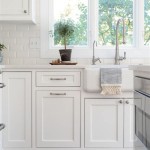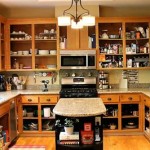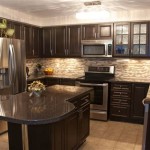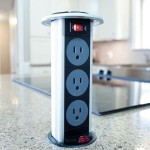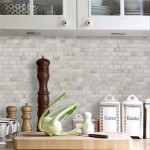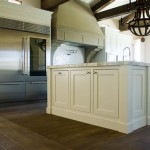```html
White Kitchens with Brass Hardware: A Timeless Combination
The white kitchen remains a consistently popular choice among homeowners and designers alike. Its versatility, clean aesthetic, and ability to reflect light make it a perennial favorite. However, an all-white kitchen can sometimes lack character and warmth. This is where the strategic use of brass hardware steps in, offering a sophisticated contrast and injecting personality into the space. The combination of white cabinetry with brass knobs, pulls, and other fixtures creates a timeless look that seamlessly blends classic elegance with modern appeal.
Brass, as a material, offers a spectrum of finishes, from polished and gleaming to aged and matte. This variety allows for customization and the ability to tailor the look of the kitchen to suit individual preferences and the overall design scheme of the home. Furthermore, brass is a durable material that can withstand the daily wear and tear of a busy kitchen, making it not only aesthetically pleasing but also a practical choice.
Understanding the Appeal of White and Brass
The enduring popularity of white kitchens stems from several key factors. White inherently brightens a space, making it feel larger and more open. It also provides a blank canvas, allowing other design elements, such as countertops, backsplashes, and accessories, to take center stage. White cabinetry is also incredibly versatile, working well with a wide range of architectural styles, from traditional to contemporary. The clean lines and simplicity of white kitchens contribute to a sense of order and tranquility.
Brass, on the other hand, introduces a touch of warmth and luxury. Its metallic sheen reflects light, adding depth and dimension to the kitchen. The warm tones of brass contrast beautifully with the cool neutrality of white, creating a visually appealing balance. Brass hardware can elevate the overall look of the kitchen, transforming it from a simple, functional space into a stylish and inviting hub of the home. The inherent elegance of brass also lends a sense of timelessness, ensuring that the kitchen remains stylish for years to come.
The combination of white and brass is not a recent trend; rather, it is a classic pairing that has been utilized in interior design for decades. However, contemporary interpretations of this combination often incorporate modern elements, such as sleek cabinet designs and minimalist hardware styles, resulting in a fresh and updated look.
Selecting the Right Brass Finish for Your White Kitchen
Choosing the right brass finish is crucial to achieving the desired aesthetic in a white kitchen. The available options range from polished brass, which offers a bright and reflective surface, to satin brass, which has a softer, more muted sheen. Antique brass and aged brass finishes provide a more vintage and rustic look, while unlacquered brass develops a natural patina over time, adding character and depth.
Polished brass is a classic choice that provides a touch of glamour and sophistication. It is particularly well-suited for kitchens with a traditional or transitional design style. However, polished brass requires regular cleaning to maintain its shine and prevent tarnishing. Satin brass, also known as brushed brass, offers a more subtle and understated look. Its soft sheen complements both modern and traditional kitchens, and it is less prone to showing fingerprints and smudges. Satin brass is a versatile choice that works well with a variety of countertop materials and backsplash designs.
Antique brass and aged brass finishes are ideal for creating a more vintage or rustic aesthetic. These finishes have a characteristic aged appearance, often with subtle variations in color and texture. They add a sense of history and character to the kitchen, making it feel more lived-in and authentic. Unlacquered brass is a living finish that will naturally darken and develop a patina over time. This finish is popular among those who appreciate the beauty of imperfection and the unique character that develops with age. However, it is important to note that unlacquered brass requires more maintenance than other finishes, as it is susceptible to tarnishing and discoloration.
Ultimately, the best brass finish for a white kitchen depends on the overall design style and the homeowner's personal preferences. It is important to consider the other elements in the kitchen, such as the countertops, backsplash, and lighting fixtures, when selecting a brass finish. Coordinating the finishes throughout the kitchen will create a cohesive and harmonious look.
Incorporating Brass Hardware and Accents into the Kitchen Design
Brass hardware is the most common and impactful way to introduce brass into a white kitchen. This includes cabinet knobs, pulls, handles, and hinges. The style of the hardware should complement the overall design style of the kitchen. For example, sleek, minimalist pulls work well in modern kitchens, while ornate knobs are more suitable for traditional kitchens. The size of the hardware should also be proportionate to the size of the cabinets and drawers.
Beyond hardware, there are numerous other ways to incorporate brass accents into a white kitchen. Brass lighting fixtures, such as pendant lights, chandeliers, and sconces, can add a touch of elegance and warmth. Brass faucets and pot fillers are another popular choice, creating a focal point at the sink area. Brass shelving brackets, utensil holders, and decorative bowls can also be used to introduce subtle touches of brass throughout the kitchen.
Consider incorporating brass details into the kitchen island. A brass-trimmed countertop or a brass-legged island can add a touch of luxury and sophistication. Brass bar stools or counter stools are another way to introduce brass into the island area. When incorporating brass accents, it is important to avoid overdoing it. A few well-placed brass accents can have a significant impact, but too much brass can overwhelm the space. It is best to use brass sparingly and strategically to create a balanced and harmonious look.
Pay attention to the placement of brass elements. Consider using brass hardware on upper cabinets and brass lighting fixtures above the island to draw the eye upward and create a sense of verticality. Brass accents can also be used to highlight specific areas of the kitchen, such as the sink area or the cooking area.
The choice of countertop material can also influence the overall effect of brass in the kitchen. Quartz countertops with warm undertones, such as creamy whites and beiges, complement brass beautifully. Marble countertops with cool gray veining provide a striking contrast to the warm tones of brass. Wood countertops can also work well with brass, creating a warm and inviting atmosphere.
Similarly, the backsplash material can play a significant role in the overall design. White subway tiles are a classic choice that works well with brass hardware. However, other backsplash materials, such as glass tiles, ceramic tiles, and natural stone tiles, can also be used to create a unique and personalized look. Consider using a backsplash with subtle metallic accents to complement the brass hardware.
Ultimately, the key to successfully incorporating brass into a white kitchen is to maintain a balance between the warm tones of brass and the cool neutrality of white. By carefully selecting the right brass finish and incorporating brass accents strategically, homeowners can create a kitchen that is both stylish and timeless.
```
White Cabinets With Polished Brass Hardware Transitional Kitchen

Black And White Kitchen With Brass Pulls Transitional

White Kitchen With Brass Accents Design Ideas

White Painted Kitchen Cabinets With Brass Hardware Jennifer Rizzo

The Ultimate Guide To White Cabinets With Gold Hardware

How To Update A Classic White Kitchen Stefana Silber

White Kitchen With Brass Hardware Adrienne Elizabeth

35 Beautiful White Kitchen Cabinets With Brass Hardware Nikki S Plate

A Classic White Kitchen Tour Kate Knowles Home

How To Use Brass Cabinet Hardware Around Your Home

